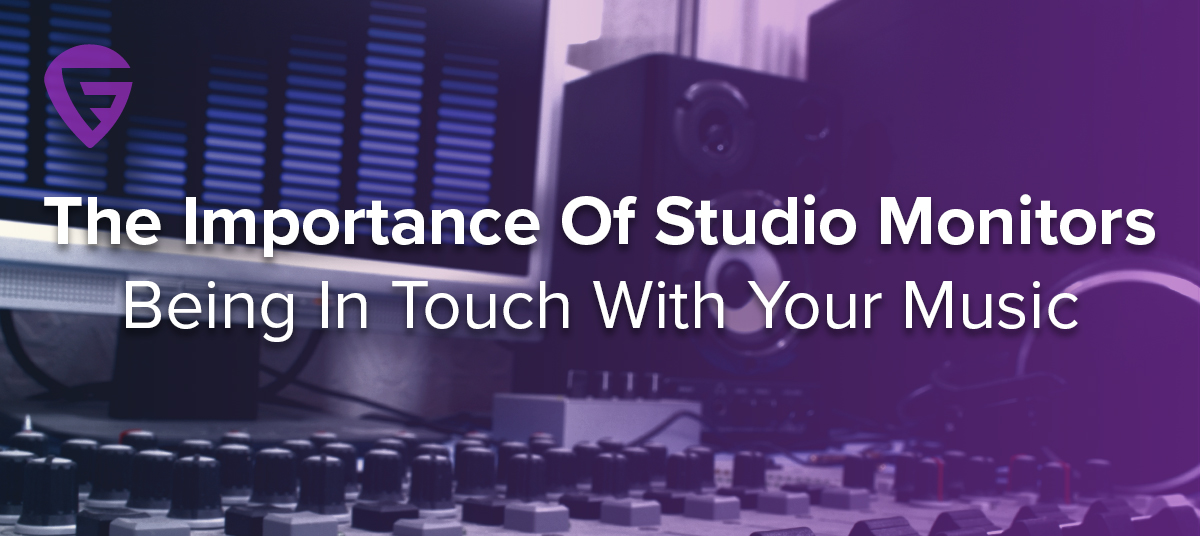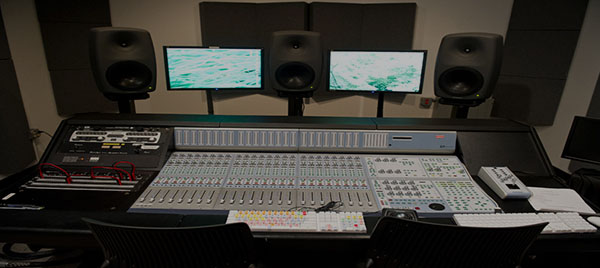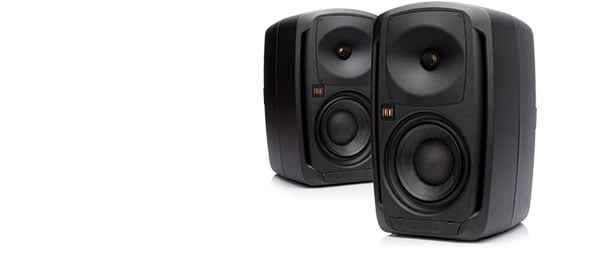- Home
- Instruments
- Gear
- Recording
- Lessons
- Reviews
- Blog

Ever since technology advanced to a level where we can record and mix music in the comfort of our own homes, studio monitor speakers have become a more popular topic. One of the more frequent mistakes beginner producers make is to completely disregard the importance of these speakers, choosing to use standard desktop speakers instead. Today we are going to talk about why this practice can cause some serious problems to your progress as a producer, and what makes studio monitors so important. If you are new to this hobby, you are in the right place. Additionally, once you're done with this guide, check out our top picks for best studio monitors on the market and find out what's available out there.
On a first glance, a set of monitor speakers looks just like any other type of speakers. You have cabinets, transducers, the works. However, it's not in the way they look but how they work. A monitor speaker is tuned completely differently from a standard bookshelf speaker. As a matter of fact, if you were to use monitor speakers as your primary music listening setup, chances are you would be very disappointed in the sound you get.
If you were to put a quality microphone in front of a regular speaker and a monitor speaker, the recorded frequency response would look very different. The graphs you get by measuring speaker's response is pretty simple. The vertical axis is your decibel value while the horizontal axis is the frequency range. A decent set of bookshelf speakers is probably going to have boosted lows with a dip somewhere in the mid range, and then a spike in trebles. Sure, this depends on the brand and model of speakers, but you get the point.
The same graph made by measuring a good set of monitor speakers is going to show a flat line that starts from the lowest frequency, spanning all the way to the highest one. This is what you call a flat frequency response and it is exactly that type of performance that makes monitors such a great tool to have in a studio.

Flat frequency response is often referred to as being transparent. More transparency will equal more insight into your mix. Without going into details of mixing and music production, let's talk a little about why transparency is important. When you are mixing music, you will want that track to sound good on all different kinds of speakers. That means home systems, car stereos, and so forth. In order to do that, you need to hear the track in its most neutral state.
A transparent set of monitor speakers allows you to do this exact thing. No specific portion of the frequency range is exaggerated, nor is there any bias. Working with such a transparent feedback means that you can hear any and all imperfections in your mix. Maybe one of the instruments is spiking in mids and it's not supposed to, maybe your bass is too wide. Either way, transparency is what allows you to notice these imperfections and take care of them.
Let's imagine a scenario where all you have available are your desktop speakers. It's a semi decent set you bought when you got the computer. You open your DAW of choice, spend 5 hours mixing a track until you are satisfied with how it sounds. Listening to that track on those specific set of speakers is going to sound awesome. However, if you were to play the same track on your friend's audio system, chances are the results would be all too different.

As dramatic as this sounds, there really is no substitute for a good set of monitorspeakers. Those couple of transducers are your only gateway into your music. You can look at the feedback on your monitor all day long, but until you actually hear what's going on, you won't have a clear enough picture.
A good thing about studio monitors is that they don't have to be expensive. Those who are just starting out will do fine with an affordable set. In some cases, a smaller pair of speakers might even be preferable depending on the size of your studio.
On a similar note, headphones are also not a great alternative. There are headphones designed specifically for monitoring purposes, however, the problem isn't their purpose, but rather their nature. Monitoring speakers dominate monitoring headphones when it comes to the sound stage and overall impression of the mix. Headphones might deliver a flat response as well, but it's all there, right next to your ears.
In most cases, the answer is going to be no. The large majority of studio monitors designed for use in home studios are active. In other words, they contain one or more built in amplifiers, meaning that only thing you have to do is plug them into a power socket and your computer. On top of that, most modern active monitors come withinputs for a variety of audio gear, so you're covered in that regard as well. There are some passive designs out there, but in most cases, you are looking at speakers that are either designed for large studios, or niche applications.
Getting into music production means that you have to get a pair of studio monitors. It is as simple as that. Those on a budget might find this to be an issue, however, there are so many awesome models that are super affordable. As you evolve your skills and grow as a producer, you will figure out just what kind of monitors work best for you. Until then, it is perfectly fine to start with an affordable set. The only thing that really matters is that you have monitors in your studio. Everything else is secondary.

Reader Interactions